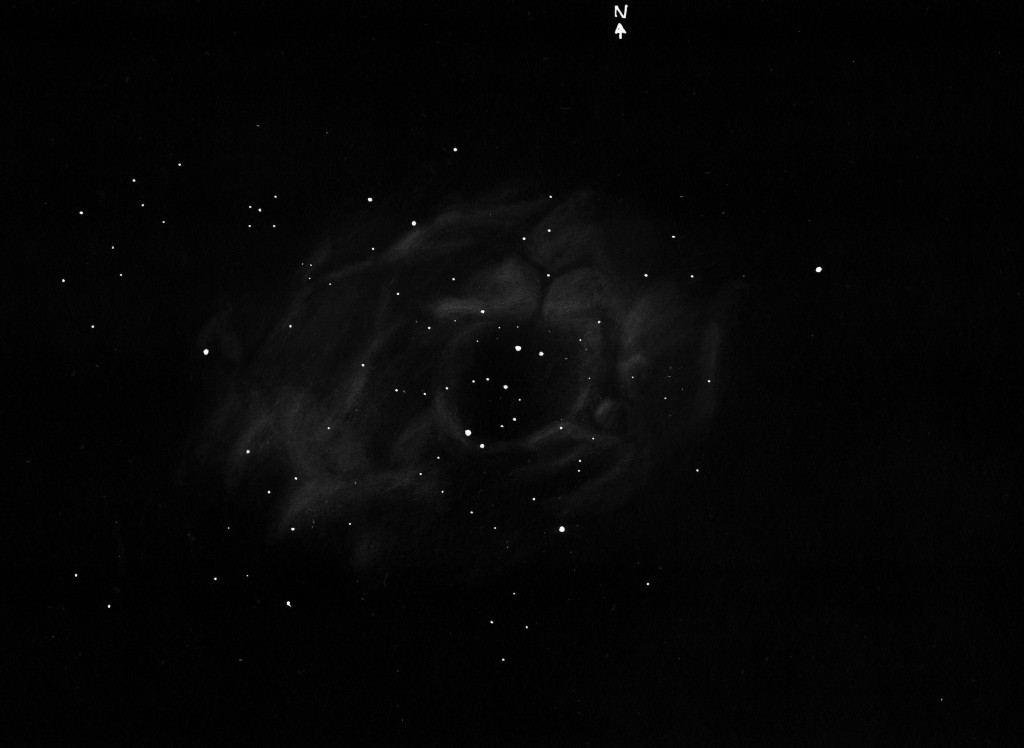
NGC 2237/39 Rosettennebel mit 16 Zoll
Ort: Kreuzleshöhe 1100m, Germany
GG: 6m5+
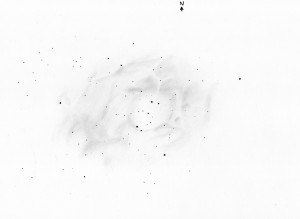
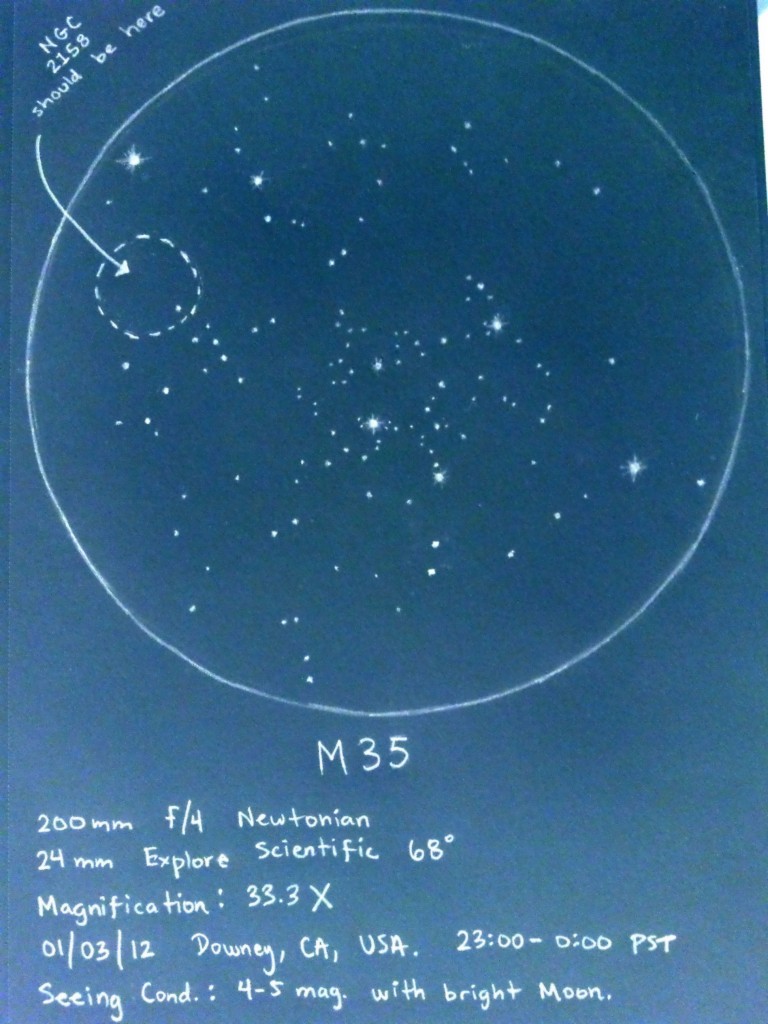
Object Name: Messier 35, NGC 2158
Object Type: Open Star Cluster
Location: Downey, CA, USA
Date: January 3, 2011. 23:00-0:00 PST.
Media: No. 2 pencil on White paper. Imaged and inverted on iPhone 4s. Second sketch ever.
Used: 200mm f/4 Astro-Tech Newtonian, with 24mm Explore Scientific 68-degree Argon Eyepiece, at 33.3X.
Seeing Conditions: 4 to 5 magnitude, with bright Moon. Was hoping to be able to see NGC 2158. But i guess that the Moon was a factor that night. I will try again on a moonless night and hopefully at least some fuzziness will appear for that little cluster.
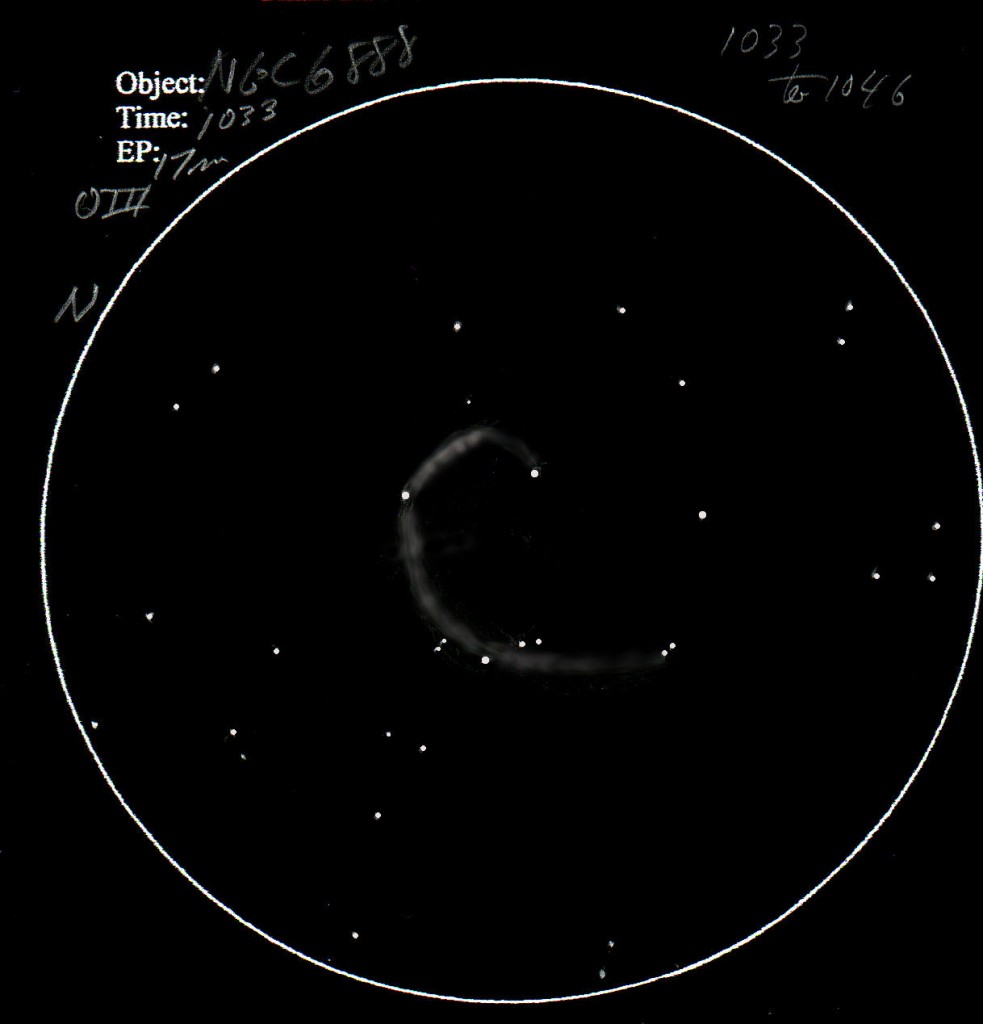
Object: NGC 6888 “The Crescent Nebula”
Object Type: Diffuse Nebula
Location: Orleans, Ont., Canada
Date: September 10 and 11
Media: graphite on white bond paper
I like hunting for challenging deep sky objects. Unfortunately, my backyard observing site is very light polluted so faint objects with low surface brightness are difficult at best. My log book is full of notes “failed to see Crescent Nebula”. But on the night of September 10, I did manage it to see it using my 12″ Skywatcher dob with a 17mm Hyperion (88x) and an OIII filter. The northern part was quite clear using averted vision but the southern part was more difficult. When I viewed this object again the following night (Sept 11) using higher magnification (115x) I was able to complete the crescent. A few nights later I was at a RASC star party in Cumberland, Ont., with much darker skies and I was able to confirm my observation.
Keep look up,
Gordon
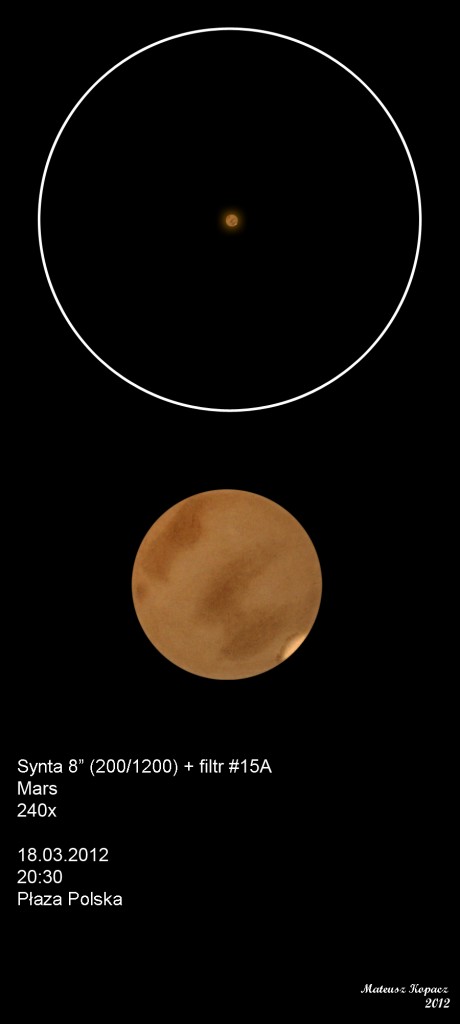
Hi everyone.
I’d like to present you my newest sketch of our Universe. It’s one of Solar System planets – Mars. It’s little small in this year opposition. It’s still beautiful, though. But the good seeing days have gone with coming of spring in Poland. I’m sure it was one of the last days with such a stable air before Mars will move away from Earth. So I decided to perpetuate the Roman god of war.
Object Name: Mars
Object Type: Planet
Location: Płaza, Poland
Date:18.03.2012
Media: graphite pencil, white paper, inverted in Photoshop CS2

Object Name M65, M66 and NGC 3628
Object Type three spiral galaxies
Location Budy Dłutowskie – small village in central Poland
Date 17.03.2012
Media graphite pencil, white paper, color invert
Telescope Columbus 320UL (320/1384 Newtonian) + Orion Q70 26mm
Seeing 4/5 (poor)
Transparency 4/5 (poor)
NELM 5,3 mag
This time I want to show you one of the most famous objects of spring sky – Leo Triplet. It is very easy to observe, even in medium binocular (15×70) but if you have 10” or bigger telescope you will catch really impressive views of all three galaxies even in medium weather conditions (fog, humidity – like I met during last weekend).
In M65 (with 13” mirror) you can observe mist with lighter core and outside spiral arms. NGC3628 looks like fog with long linear dust belt.
Clear Sky
Łukasz
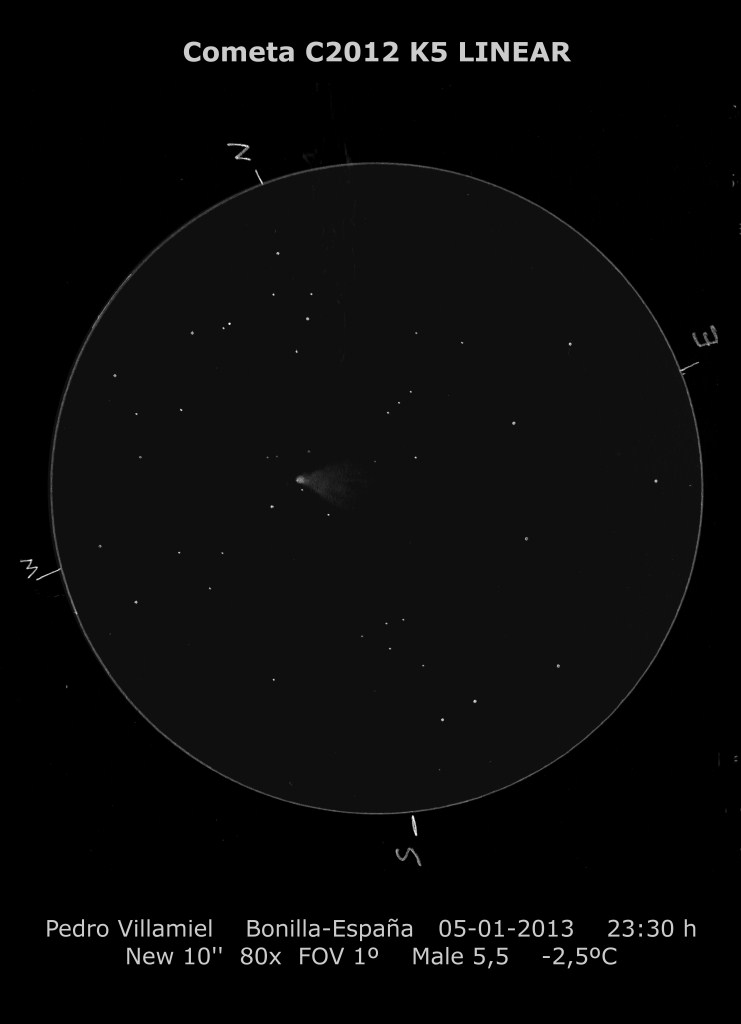
• Object Name: C2012 K5 LINEAR
• Object Type: Comet
• Location: Bonilla Spain
• Date: 01/05/2013
• Media: Graphite Pencil HB 2, torchon 1 and 130g drawing sheet
• inverted colors with GIMP 2.8
Observation notes: New 10” dob telescope. Object Elevation +68 º. Male 5,5. -2º C. Moisture 70 º/º.
Greetings to all visitors of this page.
PVG. Alcorcon, Madrid 01/15/2013
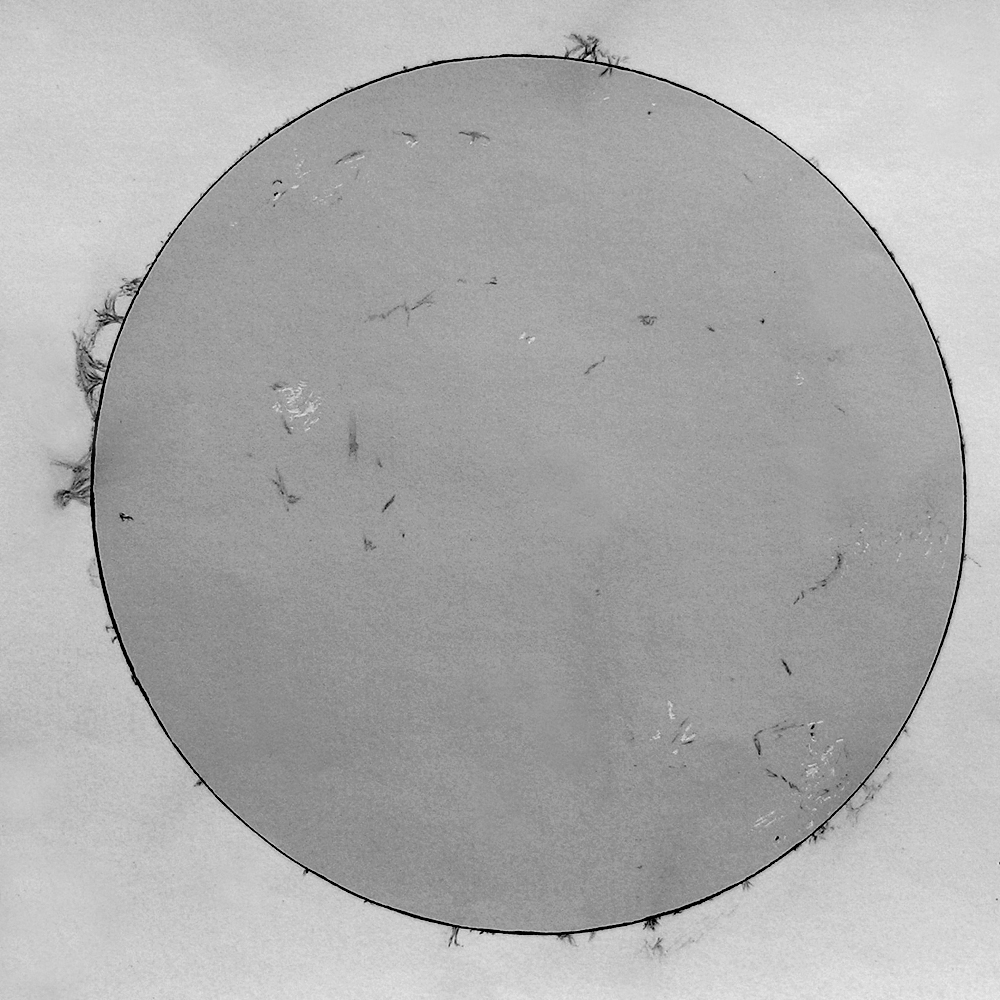
Hello,
I send you my latest h-alpha-sundrawing from 23.01.2013. I send you the positive and the negative version of my drawing.
Object Name: Sun
Object Type: Star
Location: Freising-Lerchenfeld, Bavaria, Germany
Date: January 23, 2013
Media: graphite pencil, knife, digital tools (Minolta Dimage Z2 Camera)
Time: 13:45 – 15:00 MEZ
Telescope: Coronado PST (40/400mm)
Ocular: 9mm SW
I use a drawing pattern with lightgray sun. I draw the prominences, sunspots and filaments with graphite pencil. For the active regions and flares i use the knife to scrape the gray color off. On this away I can hold finest details.
You can find more of my sundrawings on my website: www.dersonnenzeichner.de
Kind regards,
Michael Wendl
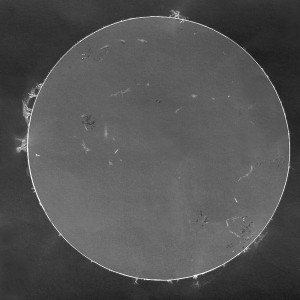
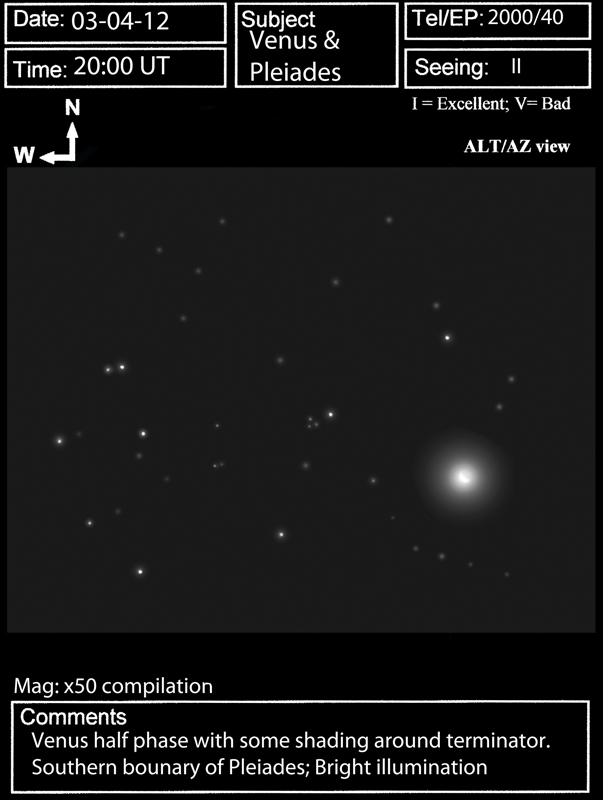
Object Name: Planet (Venus)
Object Type: Venus in the Pleiades
Location: Bristol
Date 3rd April 2012
Media: Drawn at scope with graphite pencil on white paper then scanned and processed using CS4.
I used an 8″ SCT with a 40mm wide field of view eyepiece. Constructed the final scene via 5 eyepiece sketchs and composited them together. Scans into Photoshop and then remastered.
Weather was good.
Venus was quite dazzling and washed out many of the fainter stars in the M45 cluster, almost as if to announce that she was the real “star”! Venus itself under higher magnification revealed some dusky marks around the terminator. The phase of Venus was approximately half.
Thanks
Chris Lee
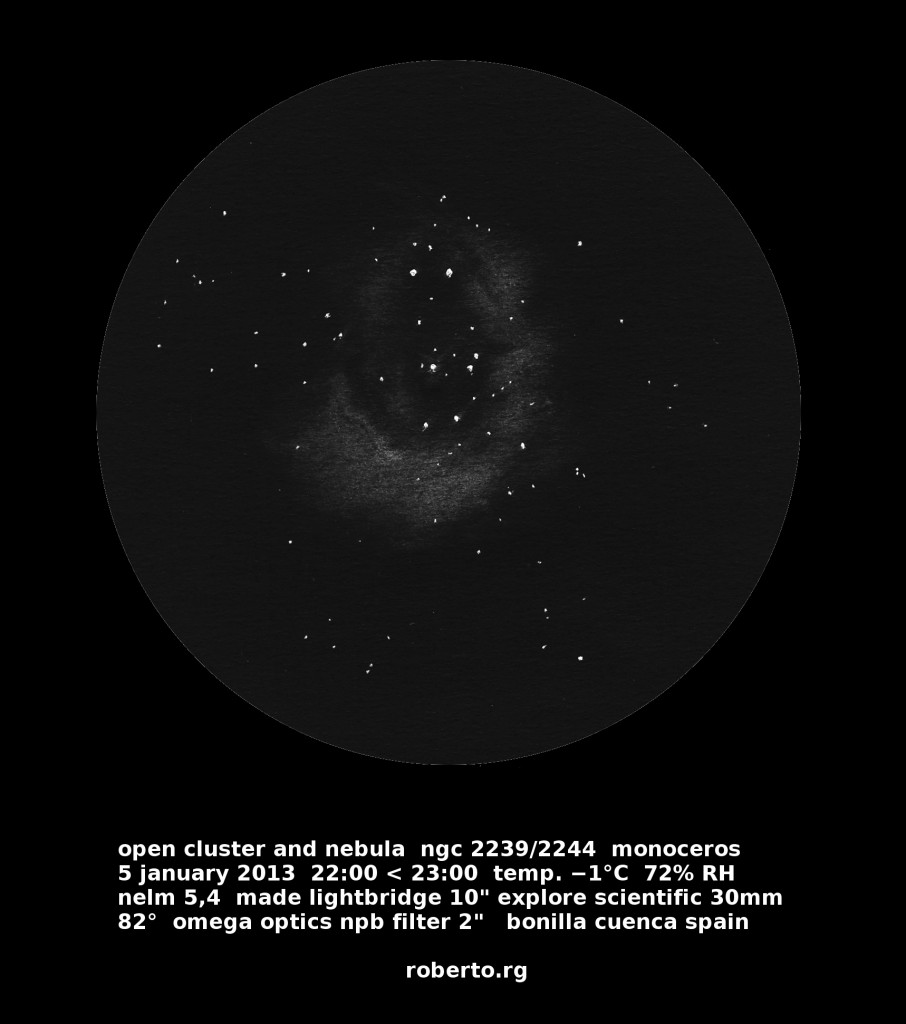
hi asod,I send this last observation of the Rosette Nebula.the sky that day was not very transparent,but after an hour of observation I could see many details and translate to paper.
the details are subtle and contrasted with this great filter.greetings and thanks
Object Name: ngc 2239/2244/2238 rosette nebula
Object Type: open cluster and bright nebula
Location: bonilla cuenca / spain
Date: 5 january 2013 hour 22:00 < 23:00
temp. -1 ° C humidity 72% nelm 5,4 bortle scale 3/9
Media: graphite pencil and gimp tools
optical equipment: meade lightbridge 10'' & explore scientific 30mm 82°
42x increases 1,9° field 6mm exit pupil
omega optics npb filter
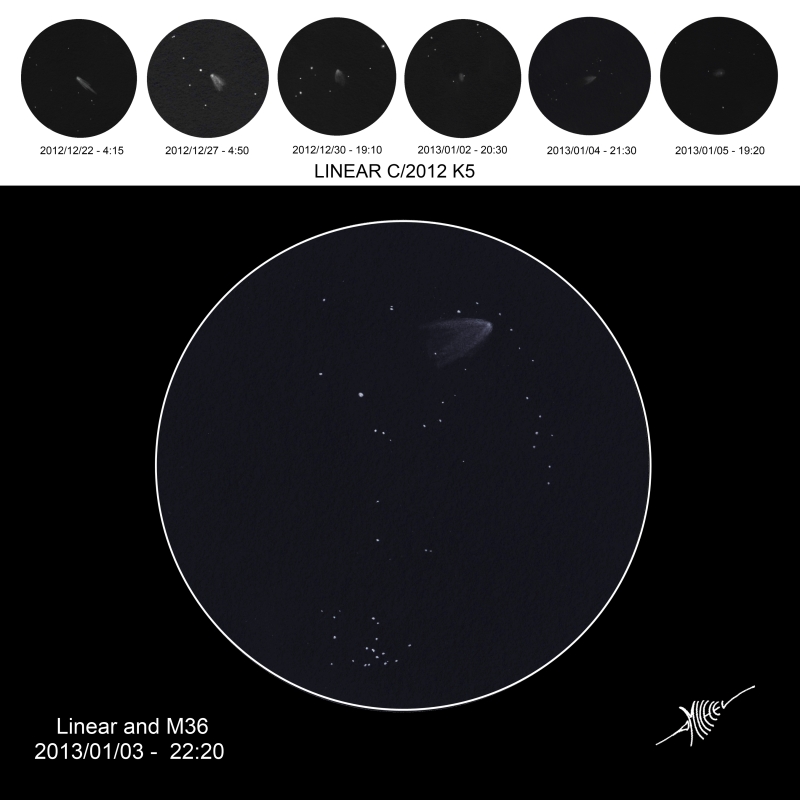
Hi Asod, all my best wishes for 2013 and a lot of nice daily sketches !
Object Name (LINEAR C/2012 K5)
Object Type (Comet)
Location (Val d’Issole – Provence – France)
Date ( from Dec. 2012-22 to Jan. 2013-05)
Media (graphite pencil, white paper, Paint.net for inversion )
In 40 years, I have already seen approximately twenty comets, LINEAR remains modest, but for me, this is the prettiest small one I observed.
To make this sketch I watched more than 12 nights with 1 to 2 hours per night to see and draw it. At year-end 2012, we had to wait early in the morning, because of the position and to avoid moon light. After the new-year passage it was more comfortable, the comet was walking near the zenith.
I evaluated the best magnitude end 2012 to 8.0 + / – 0.3. Today Jan 05 she fades out to 10 +/- 0.5.
Thanks to my friend’s astronomers in the region, I observed in four refractors, 80/480, 127/820, 102/1000, 140/1120 and two telescopes 114/500, 250/1000.
The comet was always relatively easy to catch with a wide field eyepiece, 40mm or 25mm.
The observation sites were distributed; we could compare the sky quality of Rocbaron, Rians, Flassans and Néoules.
What is interesting in the sequence is to see that near January 2nd the comet passed from one side of the ecliptic to the other, so 1 and 2 January’s tail and coma were not really separated. At the beginning of the sequence the comet follows her tail; Jan. 2 tail was behind the coma, aligned with us on earth. After that the comet flies before her tail. It’s a bit like a small cat playing with its tail.
Time is given in UT.
Thanks for taking the time to look at my sketch and a lot of clear skies to you all for 2013 !
Michel Deconinck